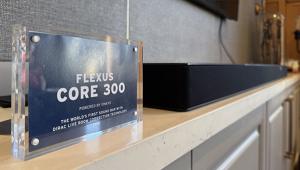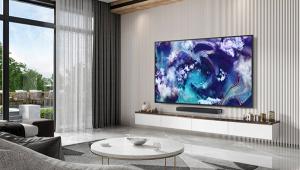Cash Frenzy 777 is a popular mobile casino game that offers a variety of slot machine experiences for players. It features vibrant graphics, engaging gameplay, and frequent updates to keep the content fresh and exciting. Players can enjoy daily bonuses, special events, and the thrill of hitting big jackpots in this virtual casino environment.
For more visit: https://cashfrenzy-777.com/
Pioneer Elite PRO-FHD1 Plasma HDTV Page 2
Another Pro Adjust menu subset is Dynamic Range Expander, and how's that for a suspect handle? Let me deal with first things first. This is where the set's three selectable gamma curves reside, and while the user manual provides no information on any of them I found the default Gamma 2 setting just fine. A setting called ACL is said to perform "such compensation that results in optimum contrast characteristics for images." I know I'm old-fashioned, but I like to be the one who adjusts the picture, and if I've done my job, it don't need no more adjusting. I left that off.
Also in the DRE subset is a Black Level adjustment that darkens the low end of the grayscale, ostensibly to enhance contrast. Looking at the low end of the grayscale I saw it get darker with this feature activated, but also saw some detail crushed. I left it off and still saw terrific blacks.
Dynamic Contrast is also here, and this I found more interesting. At the Mid setting (defined in the manual as "Standard Dynamic Contrast)" I could see that this indeed brightened up some of the mid and higher levels of the grayscale, but without crushing any detail I could see. The set came with this setting defaulted at Mid, and to be honest, after watching it for a few days it looked flat with this feature deactivated. Technically correct or not, the picture looked punchier to me with Dynamic Contrast set to Mid, so that's where it stayed.
The PRO-FHD1 is also equipped with ISF CCC. This feature takes a pro-grade calibration out of the dangerous nether regions of the service menu for the calibrator, and allows the user who has had an ISF calibration performed to quickly select fully calibrated and optimized Day and Night viewing modes from the user menu. Pioneer's Josh Kairoff refers to this process as "calibration without hacking," which is a reference to the deep and dangerous surgery that's sometimes necessary to perform to get a set looking its best. ISF CCC insures there's no warranty voiding involved, and the process is safe and easy for the calibrator (and thus for the set owner) and easy to recall in the menu for the consumer. Look for this welcome feature to start showing up in more displays aimed at enthusiasts.
The typical aspect ratio choices are available of course, including proportional and non-proportional stretch modes for getting a 16:9 screen filled by material narrower than that. Of more interest is the Dot-by-Dot aspect ratio mode, which is a direct pixel mapping mode with no horizontal or vertical scaling. Testament to the quality of the PRO-FHD1's internal processing, I couldn't see much if any improvement going Dot by Dot driven by the Gennum VXP processing in Anthem's AVM 50, which is also under review.
This TV has stereo speaker outputs and a number of audio features that can be engaged if and when you use them, but you should be shot if you buy this set and don't pair it with a high quality outboard surround sound system. There are also some settings pertaining to composite video sources, which, if I can remember back that far, is how you connect a Victrola to your TV.
The remote isn't as busy as one might expect from such a fully loaded plasma. Although it's not backlit, the real estate is wide open and well thought out, making it easy to use even when it's too dark to see the buttons. Of the utmost importance is that source inputs are directly accessible. I liked this remote so I'll call it Spartan, and uncluttered.
I should also mention that the on-screen menu interface is just as straight and clean, in spite of all of the available adjustments. Interacting with this set on a daily basis is wonderfully straightforward. Consider it the anti-Fujitsu.
Performance
The PRO-FHD1 might sneak in under your radar if you see it under the bright lights at one of the box mover stores- and hopefully its Elite status and price mean you never will. Although the PRO-FHD1 does have a fairly hideous Dynamic picture mode, the simple fact is that the Movie, Standard and Pure modes look very good in a very natural, easy on the eyes way that isn't necessarily conducive to jumping out at you from that wall of flat screens at your local electronics warehouse.
No, the PRO-FHD1's image isn't over-enhanced, and the colors aren't garish. The image is crisp and clear with absolutely startling detail and there's always a tremendous sense of dynamic snap and contrast. In fact, in all my experience with digital displays only Marantz's VP-11S1 front projector equaled the consistent level of resolving power across all sources I see here. And yet it's devoid of the cartoonish, hyperbolic pictures that are common with so many flat panel displays. Although it's already made an appearance, look for the word "natural" a few more times in this review because that's exactly what's so compelling about the PRO-FHD1.
As odd as it is to say, in many ways the most significant characteristics of this plasma's performance are in the things that aren't actually seen. Compared to every other flat panel display I've seen this one displays the most natural, non-digital looking image I've yet experienced- and not by a little. The image is shockingly and consistently free of noise, posterization, false contouring and other digital artifacts in a way that no other flat panel I've seen can lay claim to. The picture here never looks digitally "painted" as some flat panels (LCDs in particular) do.
While this plasma doesn't offer the blacks of a CRT when dark movie material is on, in every other respect it often resembles nothing so much as a large, wide direct-view CRT. The contrast is always excellent for a flat panel, and it has the same organic qualities in its color reproduction, which is among the very best I've seen from any digital display (save for the very best front projectors), but also in its non-fatiguing ease and the richness of its deep, three-dimensional detail. Simply put, it doesn't look digital, it looks pure.
My source for broadcast is DirecTV's HD TiVo via HDMI, and all my HDMI sources (including Toshiba's HD-XA1 HD DVD player for DVDs and HD DVDs, and occasionally Samsung's BD-P1000 for Blu-ray Discs) were switched through Anthem's AVM 50 surround processor (review pending). I used a 12M run of Silver Serpent Reference HDMI cable from bettercables.com, which includes a built-in repeater and provided lossless performance in comparison with a 1M run of the other HDMI cables I had laying around.
The Anthem offers Gennum's VXP processing and scaling, which is considered a premium solution typically found in upscale front projectors such as Marantz's VP-12S4 and VP-11S1 DLP projectors. The Gennum's scaling allows output resolutions as high as 1080p/60.
I've ascertained the Anthem via HDMI to be essentially lossless even at the high bandwidths required by HD sources. The experimenting I did comparing straight feeds to the Pioneer from the HD TiVo and my Toshiba HD DVD player via HDMI with HD signals from the same sources switched and processed through the Anthem yielded no strong preferences for one over the other. This speaks well of both processing suites, and left me free to choose the convenience of switching audio and video through the Anthem via HDMI.
While I was able to experiment with a variety of output formats thanks to the Gennum processing in the AVM 50, feeding the PRO-FHD1 1080p eliminates the availability of some of this plasma's processing features, such as the NR circuits. For that reason I most often preferred to feed the set 1080i at 60Hz, especially with broadcast HD, which benefited from the NR being engaged. With the 720p broadcasts I output that resolution from the HD TiVo, with the upconversion to 1080i performed in the AVM 50, and the conversion to 1080p at the Pioneer.
- Log in or register to post comments


Download 3 Patti Loot, an online application for Android users that offers a wide variety of games that you can play and easily make real money. You can download the official application right from our website. So, what are you waiting for, click the download button below and start earning from your home. Let’s dive into 3pattiloot and discover more about this app.
https://3pattilootpk.com/

Playing and earning has now become easy with Card Rummy APK, which is a well-known gaming app in Pakistan. This is an evolutionary platform which offers wide range of games, bonuses and earning and various ways to withdraw your money. It’s not just a gaming platform but a community where players connect.
https://cardrummy.app/














































